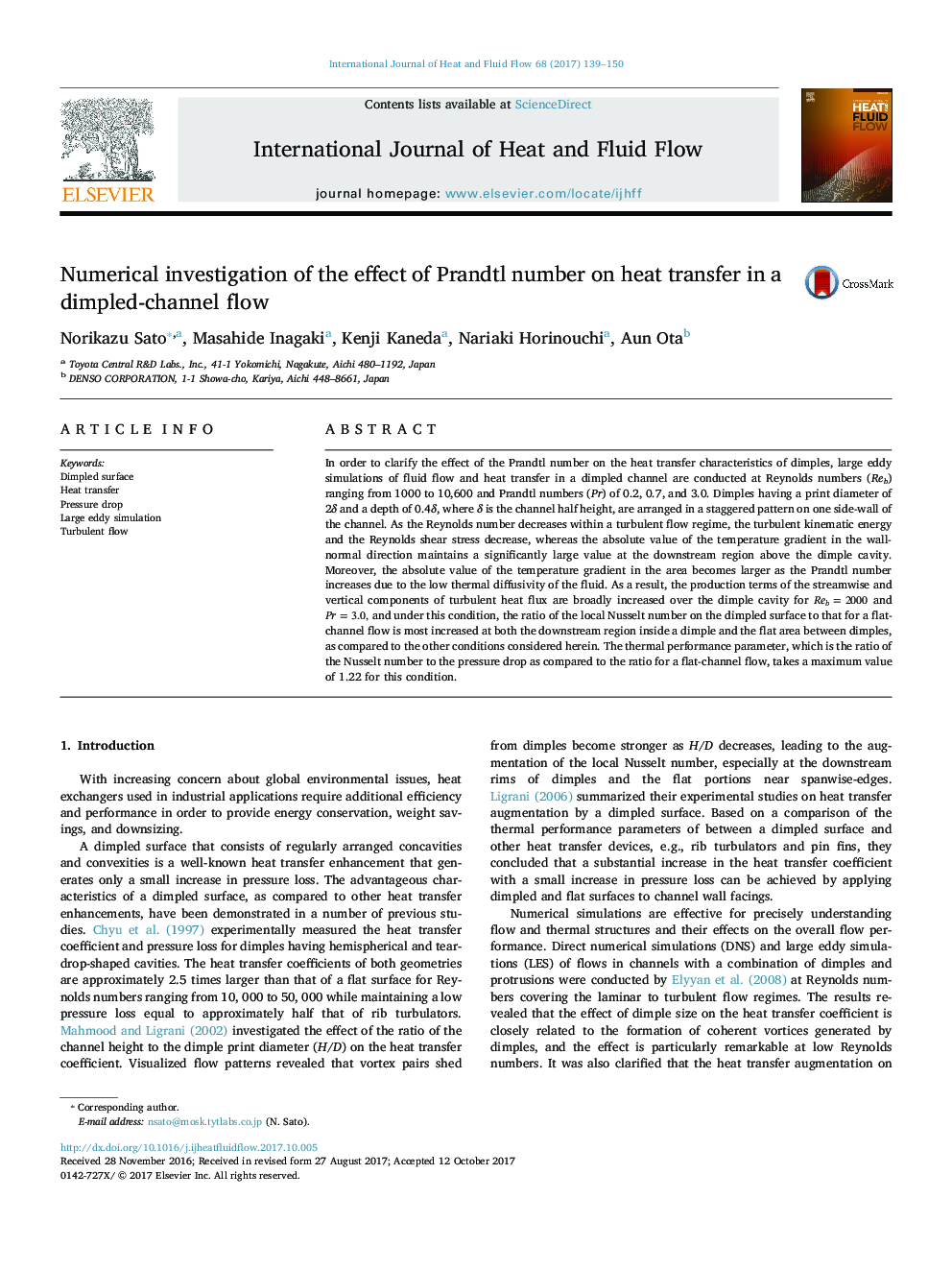| Article ID | Journal | Published Year | Pages | File Type |
|---|---|---|---|---|
| 7053566 | International Journal of Heat and Fluid Flow | 2017 | 12 Pages |
Abstract
In order to clarify the effect of the Prandtl number on the heat transfer characteristics of dimples, large eddy simulations of fluid flow and heat transfer in a dimpled channel are conducted at Reynolds numbers (Reb) ranging from 1000 to 10,600 and Prandtl numbers (Pr) of 0.2, 0.7, and 3.0. Dimples having a print diameter of 2δ and a depth of 0.4δ, where δ is the channel half height, are arranged in a staggered pattern on one side-wall of the channel. As the Reynolds number decreases within a turbulent flow regime, the turbulent kinematic energy and the Reynolds shear stress decrease, whereas the absolute value of the temperature gradient in the wall-normal direction maintains a significantly large value at the downstream region above the dimple cavity. Moreover, the absolute value of the temperature gradient in the area becomes larger as the Prandtl number increases due to the low thermal diffusivity of the fluid. As a result, the production terms of the streamwise and vertical components of turbulent heat flux are broadly increased over the dimple cavity for Reb=2000 and Pr=3.0, and under this condition, the ratio of the local Nusselt number on the dimpled surface to that for a flat-channel flow is most increased at both the downstream region inside a dimple and the flat area between dimples, as compared to the other conditions considered herein. The thermal performance parameter, which is the ratio of the Nusselt number to the pressure drop as compared to the ratio for a flat-channel flow, takes a maximum value of 1.22 for this condition.
Related Topics
Physical Sciences and Engineering
Chemical Engineering
Fluid Flow and Transfer Processes
Authors
Norikazu Sato, Masahide Inagaki, Kenji Kaneda, Nariaki Horinouchi, Aun Ota,
